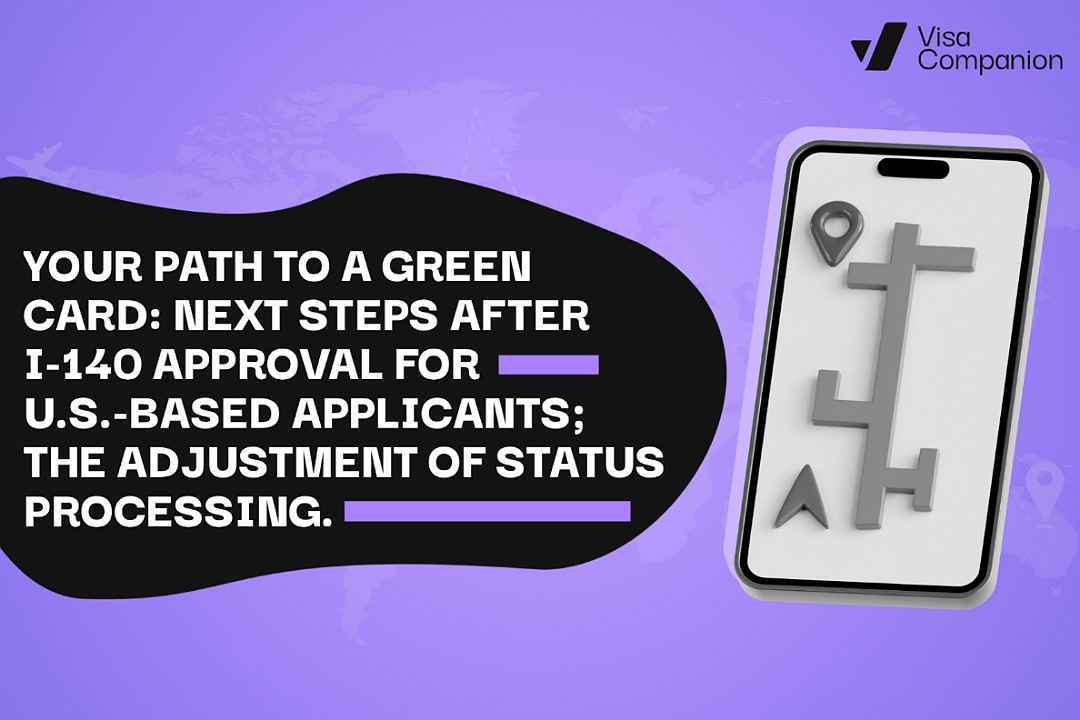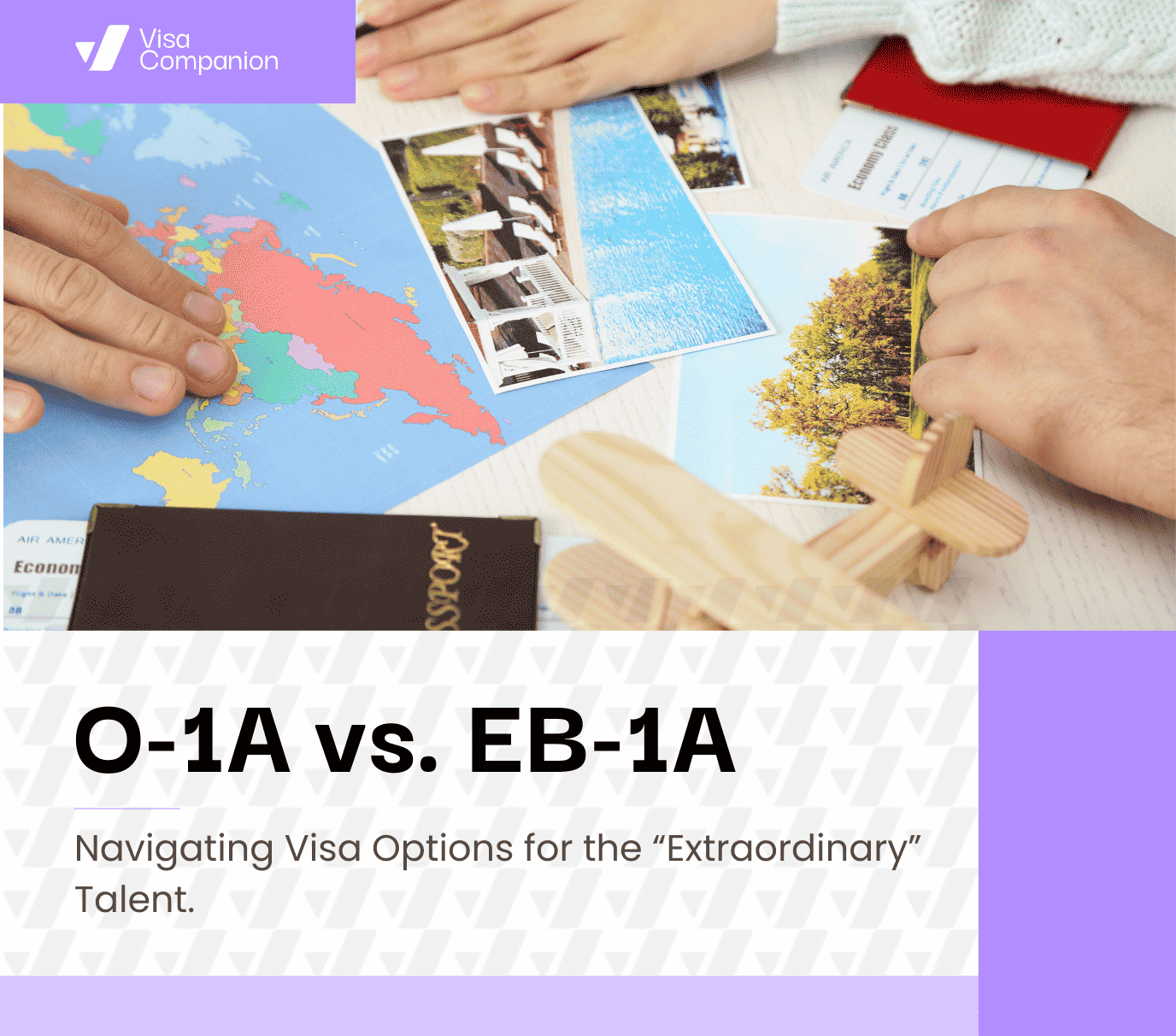YOUR PATH TO A GREEN CARD: NEXT STEPS AFTER I-140 APPROVAL FOR U.S.-BASED APPLICANTS; THE ADJUSTMENT OF STATUS PROCESSING.

YOUR PATH TO A GREEN CARD: NEXT STEPS AFTER I-140 APPROVAL FOR U.S.-BASED APPLICANTS; THE ADJUSTMENT OF STATUS PROCESSING.
After your I-140 gets approved, the next big step is applying for a Green Card. If you're already in the United States, you can do this through a process called adjustment of status (AOS), which allows you to transition from your current visa to permanent residency without leaving the country.
But what does this process involve, and who is eligible?
In this guide, we’ll walk you through the entire adjustment of status process and the next steps to take after your I- 140 is approved using the Adjustment of Status Processing.
FORM I-140 BRIEFLY EXPLAINED.
The I-140 also known as the Immigrant Petition for Alien Worker, is a document in the United States employment-based green card process. It is submitted to the United States Citizenship and Immigration Service (USCIS) to petition for a foreign national to work in the US on a permanent basis. The form I-140 is filed by persons who have extraordinary ability in the sciences, arts, business, education, or athletics, with sustained national or international acclaim in their field (EB 1A). It is also filed by persons who are members of the professions holding an advanced degree or its equivalent, or a person who has exceptional ability (EB 2NIW). After an I-140 is approved, it generally means the foreign worker is eligible for the requested employment-based immigrant category. However, it is to be noted that approval of the I-140 petition does not immediately grant permanent residency. It is an important step toward obtaining a green card, but the foreign worker must still complete additional steps, such as applying for adjustment of status if he is present in the USA.
WHAT IS THE ADJUSTMENT OF STATUS PROCESSING
Adjustment of status is the process that you can use to apply for lawful permanent resident status (also known as applying for a Green Card) when you are present in the United States. This means that you may get a Green Card without having to return to your home country to complete visa processing. Form I-485 is the application to register permanent status or adjust status.
This form I-485 is one of the most important documents you will need when applying for your green card using the adjustment of status. The form can be filed with Form I- 765 that is the “Application for Employment Authorisation” and the Form I-131 , that is the Application for Travel Documents, also known as “Advance Parole" if applicable.
The Form I-765 also called the ‘work permit’ is an application used by foreign nationals to allow them to work while their I-485 application is pending. The Form I-131 on the other hand is a travel permit that allows individuals living in the U.S. while waiting for their green card to travel abroad without risking the cancellation of their green card application. It’s an essential document if you expect to travel internationally during your application process.
NEXT STEPS TO BE TAKEN: The steps to be taken for processing your green card under the Adjustment of Status Processing are outlined as follows
Filing the Petition: After your I-140 has been approved, the first step to take is to file your petition with USCIS, after that, you will get a letter from USCIS stating the status of your form I-485, I-765 and I-131. The letter will include your case status number which you will use to track the status of your case using the USCIS case tracker. It is to be noted however, before filing your I-485, your priority date must be current based on the Visa Bulletin, meaning a visa is available for your preference category.
Biometrics Appointment: After this step comes the biometric appointment, also called the “Application Support Center (ASC)”. Here, you will get a letter containing the date of your biometrics, location, date and time This step is basically for USCIS to run background checks on you. USCIS will obtain your photograph, fingerprints and have you sign your name. This process confirms your identity so that USCIS provides benefits to the correct person and facilitates the necessary criminal background check. USCIS will submit your biometrics to the FBI for the criminal background check.
Documents needed for the biometric appointment includes:
- Notice of Appointment, that is Your ASC appointment notice (Form I-797C).
- State issued ID or passport.
- Any document the USCIS specifically requested, such as travel permits or previous employment authorization documents, for example
It is recommended that you that you print or save a copy of your completed application or petition before you come to your ASC appointment
- Rescheduling Biometrics: In cases where you are unable to attend your biometrics, you are to reschedule using the USCIS online account. Requests to reschedule through your USCIS online account must be made at least 12 hours before your scheduled appointment time. Failure to request a reschedule before your existing appointment or failing to establish good cause, may result in USCIS considering your application, petition, or request abandoned and, as a result, it may be denied.
After the background check is completed, you will be notified of the outcome. If it is successful, an interview date will be scheduled.
- Interview: During the interview, the officer verifies that the applicant understood the questions on the application and provides the applicant with an opportunity to revise any answers completed incorrectly or that have changed since filing the application. It is to be noted however that USCIS might not always schedule an interview; depending on your case type and USCIS discretion, the requirement of an interview might be waived for applicants with clean background checks, strong documentation, and no immigration violations.
Prior to attending the interview, there are documents needed:
- Form I-140 approval letter
- Birth Certificate
- Visa Stamps
- Form I-797: Also called a receipt notice or approval notice, this form I-797 is sent to immigrant and non-immigrant visa applicants to inform them that their application has been received or approved.
- Educational Degrees
- Marriage Certificate
- Divorce Decree
- Tax Returns
- Form I-693 (Medical Report): This form is used to prove that they are not inadmissible on public health grounds. This form is meant to be given directly to USCIS upon receipt from an authorized civil surgeon no more than two years prior to filing Form I-485. The medical examination must take place before the green card interview, while filing the I-485 as recommended by USCIS.
- Form I-765 (Application for Employment Authorisation): Also called a work permit, this form is used if you intend working in the USA,. pending the approval of your I-485.
- Form I-131 ( Application for Travel Documents): Also known as advance parole, this form is used if you intend traveling outside the US while your form I-485 is processed.
Without this travel document, leaving the U.S. during your pending green card application may lead to the termination of your application.
By following these steps carefully and ensuring all required documents are in order, you can help facilitate a smooth adjustment of status process and move closer to obtaining your green card.
- Request for Evidence: If USCIS needs more information to process your application, they might send you a Request for Additional Evidence (RFE). This can happen if:
- You didn’t include all the required documents,
- Some of the documents you submitted are outdated, or
- The officer reviewing your case needs more details to confirm your eligibility.
The RFE will clearly list what’s missing, where to send the extra documents, and the deadline for responding. It's important to reply by that date, or your Form I-485 could be denied. Not every applicant will get an RFE, but if you do, make sure to follow the instructions carefully.
Track Your Case Status: You can easily check the status of your Form I-485 online or by calling the USCIS Contact Center at 800-375-5283. If you are deaf, hard of hearing, or have a speech disability, you can use TTY at 800-767-1833. When checking your status, make sure you have key details handy, such as your receipt number, A-Number, full name, and date of birth, as the USCIS representative will need this information to assist you.
Receiving a Decision on Your Application: Once USCIS makes a decision on your Form I-485, they will send you a written notice.
- If your application is approved, you’ll first receive an approval notice, followed by your Permanent Resident Card (Green Card) shortly after.
- If your application is denied, the notice will explain the reasons for the denial and whether you have any options to appeal. In most cases, you cannot appeal a denial for adjustment of status, but you may be able to file a motion to reopen or reconsider your case, depending on the circumstances.
Successfully completing the adjustment of status process after your I-140 approval is crucial for obtaining your Green Card and ensuring your future in the United States. Understanding the steps involved can really help you prepare. It’s important to stay organized, stick to deadlines, and have all your documents in order. As you go through each part of the process, whether it's your biometrics appointment, preparing for the interview, or responding to requests for more information, remember that each step gets you closer to permanent residency. With some careful planning and determination, you can make this transition smoother and open up new opportunities for your life in the U.S
More Blogs

Navigating EB2-NIW and EB-1A Visa Timelines: Strategies for Efficient Processing
June 2, 2023Understanding the processing times for EB2-NIW (National Interest Waiver) and EB-1A (Extraordinary Ability) visas is crucial for applicants aspiring to obtain these U.S. employment-based preference visas.

EXPLORE THE PATHWAYS TO U.S. RESIDENCY: UNDERSTANDING THE EB-2 NIW VISA
April 22, 2023The EB-2 visa is one of the most sought-after visa classifications in the U.S. employment-based immigration system. Designed for individuals with advanced degrees or exceptional abilities in their field, this visa provides a pathway to permanent residency (Green Card) in the U.S. In particular, the EB-2 National Interest Waiver (NIW) stands out because it allows qualified individuals to bypass the need for employer sponsorship and labor certification. In this blog, we’ll focus on the EB-2 NIW visa classification—what it is, how to qualify, and the steps to apply. Whether you’re a scientist, entrepreneur, or professional with expertise in a critical field, this guide will provide the comprehensive information you need.

O-1A vs. EB-1A: Navigating Visa Options for the "Extraordinary" Talent
April 22, 2023Explore the differences between the O-1A and EB-1A visas for talented individuals immigrating to the US. Learn about the temporary, sponsored O-1A visa versus the permanent, self-petitioning EB-1A option. Gain clarity on which visa aligns best with your goals.

Empowering Your Immigration Journey with Expert Guidance
April 2, 2024Imagine the thrill of a new life in the US. It could be a groundbreaking research opportunity at a prestigious university, reuniting with family you haven't seen in years, or the chance to build a life in a dynamic, multicultural society. But before you celebrate with that celebratory American apple pie, the intimidating world of immigration laws looms. Complex legalese, unfamiliar processes with ever-changing deadlines, and the constant worry of rejection – enough to turn anyone's dream into a stressful mess.